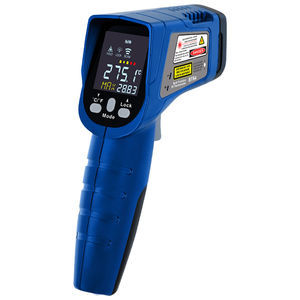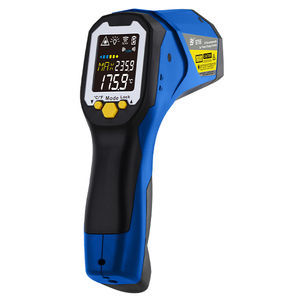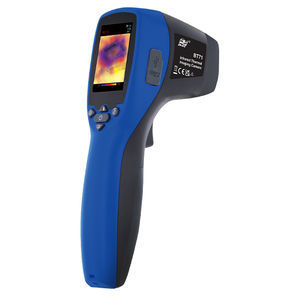
- Metrology - Laboratory
- Inspection and Monitoring
- HVAC camera
- BST Caltek Industrial Ltd
- Company
- Products
- Catalogs
- News & Trends
- Exhibitions
HVAC imager BT-72for building diagnosticsthermal imaginginfrared

Add to favorites
Compare this product
Characteristics
- Applications
- for building diagnostics, HVAC
- Function
- thermal imaging
- Spectrum
- infrared, visible
- Other characteristics
- compact
Description
Thermal imager applications in the HVAC industry are broad. A technician must check through walls, pipes, and electrical or mechanical systems. An Infrared Thermal imager can help identify thermal patterns of an object's surface to identify leaking pipes, mould formation, mechanical failures, deteriorating electrical components, and inadequate insulation airflow distribution. You can even use a thermal imager to provide energy advice by detecting heating and cooling losses.
Thermal Imagers are gaining in popularity as the technology, portability, and compact designs of the devices improve, making them more cost-competitive and an ideal choice as a helping tool. Thermal imaging cameras render infrared radiation, or heat, as visible light to precisely measure the surface temperature of an object. This infrared energy is a light wavelength undetected by the human eye and allows you to see heat patterns emanating from the object in different colours; the higher the temperature, the greater the infrared radiation emitted. The slightest temperature sensitivities can signal a fatigued or overheated fan motor, condenser or evaporate coils, control valves, and any other component that might not otherwise notice.
HVAC professionals focus on installing, performing, and maintaining residential and commercial heating and cooling systems. They can think of the thermal imager as a helping hand, a tool that complements their know-how to inspect, troubleshoot, and prevent problems before they ever happen.
Catalogs
No catalogs are available for this product.
See all of BST Caltek Industrial Ltd‘s catalogsOther BST Caltek Industrial Ltd products
IR Temperature Measurement
Related Searches
- Digital camera system
- Visible camera system
- Industrial camera system
- Infrared imager
- Surveillance camera
- USB imager
- Compact camera module
- Detection imager
- Thermal camera
- High-definition camera
- CCD video camera
- Robust camera
- High-speed camera module
- Inspection camera system
- IR camera system
- High-performance camera module
- Portable camera
- Smart camera system
- Ethernet imager
- Lightweight camera module
*Prices are pre-tax. They exclude delivery charges and customs duties and do not include additional charges for installation or activation options. Prices are indicative only and may vary by country, with changes to the cost of raw materials and exchange rates.








